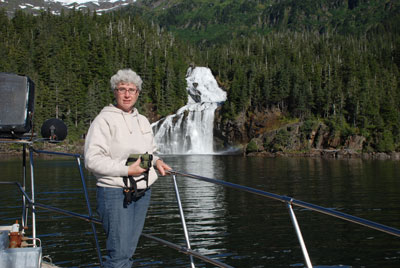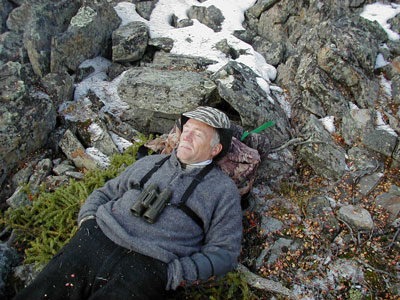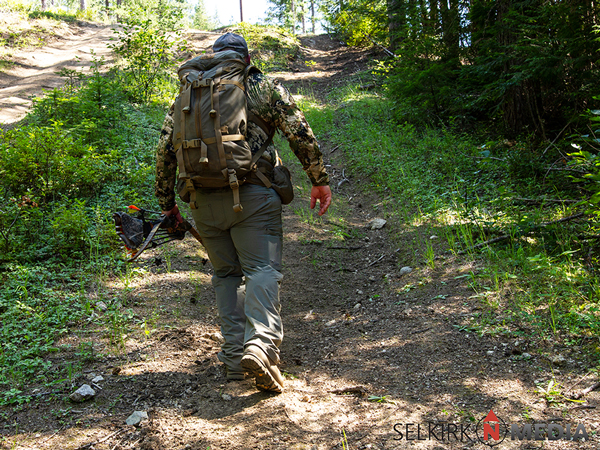I’ve always been told “you get what you pay for” and that point was sure driven home for me when it came to buying my first pair of binoculars. I suppose I should qualify that by saying my first pair of GOOD binoculars.
My first ever pair of binoculars cost $99 and I thought that was expensive. Go ahead and laugh. They were purchased for my first trip to Alaska and I bought them in Seattle while I was on a layover between flights. I thought they were okay at the time, but boy, was I wrong.
Fast forward to many years later….I now hunt, bird watch, view wildlife and carry my binoculars with me almost as second nature. Do I still have that pair of $99 pocket binoculars (I can’t even recall what power they were)? No!! I have come up in the world, although I have to admit that I did a little kicking and screaming along the way.
My first foray into quality optics happened when my husband told me a friend was selling a pair of binoculars and asked if I was interested in buying them. They were practically brand new and he was letting them go at a great price. Only $450. “ONLY $450?” I replied. How can a pair of binoculars be worth that much?! The rest of the conversation was pretty much an education about binoculars and the conversation ended with me being told that I would, in fact, buy those binoculars.
So, what was the education that I received about binoculars that made me see the light? It all started with the advice to buy the best binoculars that I could afford. While I thought all I could afford was $99, it wasn’t until I picked up this newer, more expensive pair and looked through them that I saw the light (literally and figuratively). What a difference!

On the deck of the Outer Limits in 2006 (or thereabouts), in front of an unnamed waterfall in Alaska, holding the “$450 binoculars” Swarovski 10 x 42.
How do you decide what binoculars you should get? Well, it basically comes down to what you will be using them for and how much you can afford. It also depends a lot on personal preference – how do they feel in your hand, how easy are they to focus, how heavy are they to carry and how weather resistant do they need to be? All great questions and definitely important factors to consider.
There are lots of variables with binoculars that can affect the price, which is usually a reflection of the quality of the materials. Binoculars are made up of lenses, prisms and the housing; there are a few other elements as well, but we can focus on these for now (pun intended).
Without going into too much detail, the quality of the glass used in the prisms, and the coatings that are applied to that glass, can greatly affect the price of the binoculars. There are two options for prisms to consider when selecting binoculars and, while the prism system itself might not matter, it will affect the shape and size of the binoculars. The prism system is necessary to ensure that you are seeing the object right side up when you look through your binoculars. There are pros and cons to each type of prism system so when shopping for optics, be sure to shop somewhere with knowledgeable staff who can answer your questions, explain the differences between the prism systems and offer insight on different brands. Why is Brand A so much more expensive than Brand B? It could be the quality of glass used, the quality of coatings on the glass and/or the type of prism system. These are all basics that you should explore before making your purchase.
Another factor to consider is what will you be using the binoculars for? Are you bird watching? Hunting? Viewing wildlife? Will you be carrying them around your neck and holding them up to your eyes for long periods of time? My first pair of good binoculars (you remember, the $450 pair) are fairly large and heavy, but I’ve gotten used to them and love them. My newest pair of binoculars, a pair of 8 x 32, is quite a bit smaller and more lightweight. I recently took a trip to Uganda, where there was lots of bird watching and wildlife viewing. I opted to take my smaller binoculars because they would be easier to travel with, lighter to carry around my neck for long periods of time and easier to carry in my backpack. It was as simple as that.
Another important factor to consider is what all the numbers mean. Should you get 8 x 32? 10 x 42? Again, you want to make sure you are getting your questions answered when deciding to spend upwards of a couple thousand dollars, in some cases, on a pair of quality optics. Even if you’re only spending a few hundred, you want to make the best choice possible. The numbers on binoculars refer to the amount of magnification and the diameter of the objective lens. Huh? Take my $450 binoculars, for example, they are 10 x 42. That means the binoculars have a 10X magnification power, making what you are looking at appear ten times closer than it is with your naked eye. The second number, 42, describes the diameter of the objective lens (the front lens). This one feature can affect multiple characteristics of the binoculars, including the amount of light those binoculars can gather, which in turn affects the clarity and sharpness of what you are looking at, especially in low light conditions. The diameter of the objective lens can also affect the size and weight of the binoculars, so you definitely want to consider how you will be using the binoculars when deciding on what “power” binos to purchase.

Dave Doran in Northwest Territories (2004) having a nap with his favorite pair of Zeiss binoculars.
One of the last features that should definitely be explored when making your selection is the focus system on the binoculars. I don’t share my binoculars. This was rule number one taught to me. My binoculars are center focus with a dioptric adjustment. This means I can focus each eyepiece independently, giving me a crisp clear view of my subject, with a minimal amount of fiddling around as I scan the landscape for big game or try to find a small bird in a forest canopy. My right eyepiece is set for my right eye’s vision, using a diopter adjustment on the center wheel. I then use the center wheel, in the middle of the housing, to adjust for my left eye. Other options include independent focus, where you can focus each eyepiece separately, and focus-free, where there is no mechanism to focus.
There is one last option to consider, but it is more a choice of personal preference. That option is the housing style and housing material. While the housing doesn’t necessarily affect optical performance, it does affect the feel, weight and durability. It could also affect the overall price of those optics.
While I did gripe and complain about the cost of my first good pair of quality optics, I definitely see the value of my investment. Those $450 binos, that I thought were so expensive, were about $2000 when purchased new. Would I spend $2000 to replace them? You bet! That point was driven home for me while in Uganda this past spring. I broke my own rule of never letting someone else use your binoculars. A gal on the trip had the same pair of $99 binos that I used to have and she was trying to look at a crocodile along the edge of the river. I handed her my binos and when she lifted them to her eyes, her remark was “Holy crap!” We both started laughing. She had just seen the light, as I had many years ago.
Photo: Nancy in Uganda, doing a little birding while riding on top of the Land Cruiser. The binos are Swarovski EL 8 x 32.







Leave A Comment